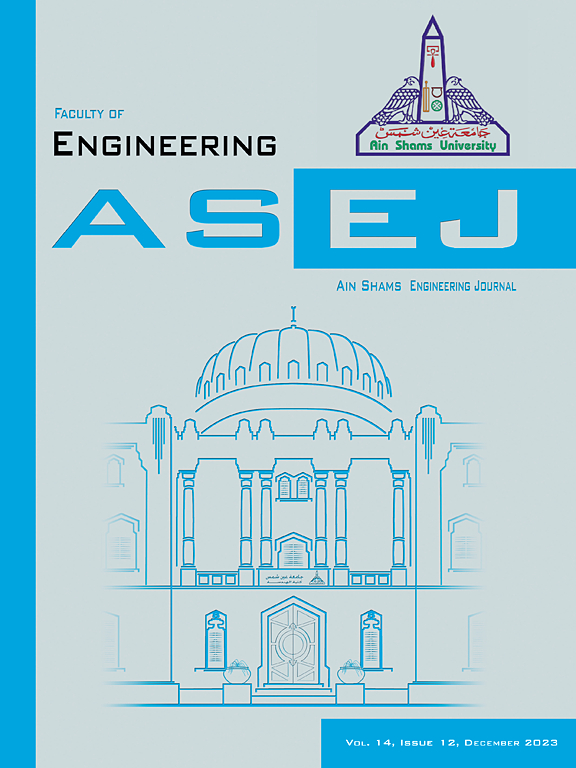具有互联输电网的智能电网多区域分散最优潮流框架
IF 5.9
2区 工程技术
Q1 ENGINEERING, MULTIDISCIPLINARY
引用次数: 0
摘要
智能电网(SGs)通过先进的通信协议、分散的控制体系结构和智能自动化,提高了运行效率、可靠性和可再生能源的集成,正在彻底改变现代电力系统。输电网络作为支撑这一转型的关键基础设施,实现实时监控、自适应自动化和高速数据交换,以确保大型系统之间安全高效的电力输送。为了充分利用这些进步,最优潮流(OPF)方法对于在动态和不确定条件下最小化损失和增强电网稳定性至关重要。本研究提出了一个完全分散的多区域智能电网OPF框架,利用生物启发的动态领导者选举算法(DLEA)来优化决策和增强协调。该框架从14总线,4区域测试系统扩展到多达515总线的大规模网络,结合可再生能源模块和支持物联网的自适应负载进行实时优化。在515总线系统上的仿真结果表明,DLEA的成本为530.432美元,误差为3.901×10-3%,优于最优控制设计(OCD)等基准算法,后者的成本为563.563美元,误差为7.109×10-3 %。此外,DLEA在14.678秒内完成优化,效率为63.291%,而OCD的效率为190.201秒,效率为62.273 %。不同算法之间的对比分析表明,DLEA降低了传输损耗,实现了更好的电力线利用率,并使所有母线电压保持在1.0-1.1p.u的稳定运行范围内。该算法比ADMM算法效率高1.22%,且迭代次数少,收敛速度快。这些结果证实了DLEA在可伸缩性、稳定性和计算效率方面的优越性能。对不同地区(包括泰国、巴基斯坦和澳大利亚)进行的可行性分析进一步支持了该框架在异构电网基础设施中的稳健性和实际适用性。本文章由计算机程序翻译,如有差异,请以英文原文为准。
A multi-area decentralized optimal power flow framework for smart grids with interconnected transmission networks
Smart grids (SGs) are revolutionizing modern power systems by enhancing operational efficiency, reliability, and the integration renewable energy through advanced communication protocols, decentralized control architectures, and intelligent automation. The transmission network serves as the critical infrastructure underpinning this transformation, enabling real-time monitoring, adaptive automation, and high-speed data exchange to ensure secure and efficient electricity delivery across large-scale systems. To fully exploit these advancements, optimal power flow (OPF) methodologies are essential for minimizing losses and enhancing grid stability under dynamic and uncertain conditions. This study proposes a fully decentralized OPF framework for multi-area smart grids, utilizing a bio-inspired Dynamic Leader Election Algorithm (DLEA) to optimize decision-making and enhance coordination. The framework extends from a 14-bus, 4-area test system to large-scale networks up to 515 buses, incorporating renewable energy modules and IoT-enabled adaptive loads for real-time optimization. Simulation results on a 515-bus system demonstrate that DLEA achieves a cost of $530.432 with an error of outperforming benchmark algorithms such as the Optimal Control Design (OCD), which incurs a higher cost of $563.563 and an error of 7.109 %. Additionally, DLEA completes optimization in 14.678 s with 63.291 % efficiency, compared to OCD’s 190.201 s and 62.273 % efficiency. A comparative analysis across different algorithms reveals that DLEA reduces transmission losses, achieves better power line utilization, and maintains all bus voltages within the stable operational range of 1.0–1.1p.u. The algorithm demonstrates a 1.22 % higher efficiency than ADMM and converges faster with fewer iterations. These results confirm DLEA’s superior performance in scalability, stability, and computational efficiency. A feasibility analysis conducted for diverse regions—including Thailand, Pakistan, and Australia—further supports the robustness and practical applicability of the proposed framework in heterogeneous grid infrastructures.
求助全文
通过发布文献求助,成功后即可免费获取论文全文。
去求助
来源期刊

Ain Shams Engineering Journal
Engineering-General Engineering
CiteScore
10.80
自引率
13.30%
发文量
441
审稿时长
49 weeks
期刊介绍:
in Shams Engineering Journal is an international journal devoted to publication of peer reviewed original high-quality research papers and review papers in both traditional topics and those of emerging science and technology. Areas of both theoretical and fundamental interest as well as those concerning industrial applications, emerging instrumental techniques and those which have some practical application to an aspect of human endeavor, such as the preservation of the environment, health, waste disposal are welcome. The overall focus is on original and rigorous scientific research results which have generic significance.
Ain Shams Engineering Journal focuses upon aspects of mechanical engineering, electrical engineering, civil engineering, chemical engineering, petroleum engineering, environmental engineering, architectural and urban planning engineering. Papers in which knowledge from other disciplines is integrated with engineering are especially welcome like nanotechnology, material sciences, and computational methods as well as applied basic sciences: engineering mathematics, physics and chemistry.
 求助内容:
求助内容: 应助结果提醒方式:
应助结果提醒方式:


